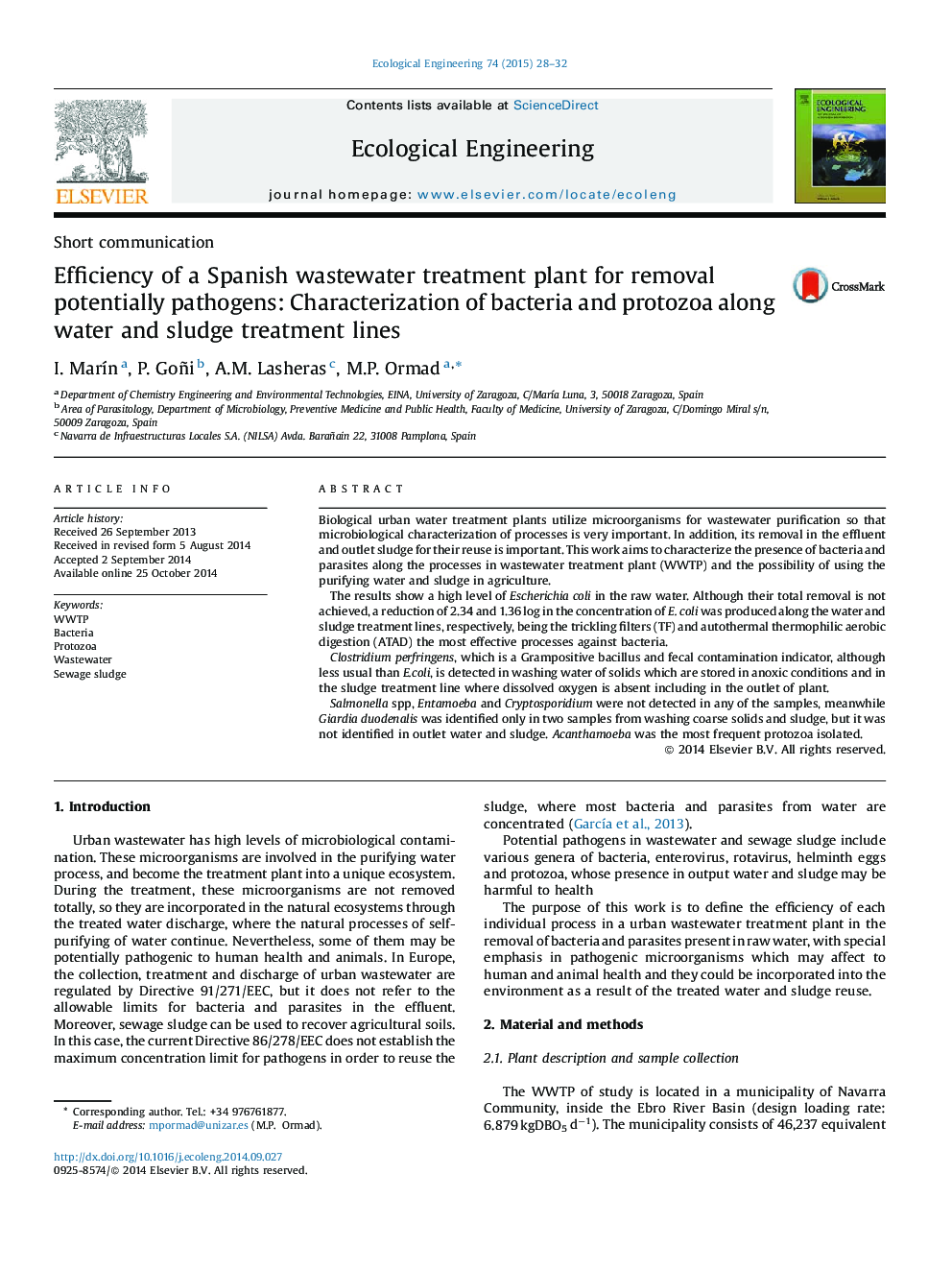| Article ID | Journal | Published Year | Pages | File Type |
|---|---|---|---|---|
| 4389290 | Ecological Engineering | 2015 | 5 Pages |
Biological urban water treatment plants utilize microorganisms for wastewater purification so that microbiological characterization of processes is very important. In addition, its removal in the effluent and outlet sludge for their reuse is important. This work aims to characterize the presence of bacteria and parasites along the processes in wastewater treatment plant (WWTP) and the possibility of using the purifying water and sludge in agriculture.The results show a high level of Escherichia coli in the raw water. Although their total removal is not achieved, a reduction of 2.34 and 1.36 log in the concentration of E. coli was produced along the water and sludge treatment lines, respectively, being the trickling filters (TF) and autothermal thermophilic aerobic digestion (ATAD) the most effective processes against bacteria.Clostridium perfringens, which is a Grampositive bacillus and fecal contamination indicator, although less usual than E.coli, is detected in washing water of solids which are stored in anoxic conditions and in the sludge treatment line where dissolved oxygen is absent including in the outlet of plant.Salmonella spp, Entamoeba and Cryptosporidium were not detected in any of the samples, meanwhile Giardia duodenalis was identified only in two samples from washing coarse solids and sludge, but it was not identified in outlet water and sludge. Acanthamoeba was the most frequent protozoa isolated.
